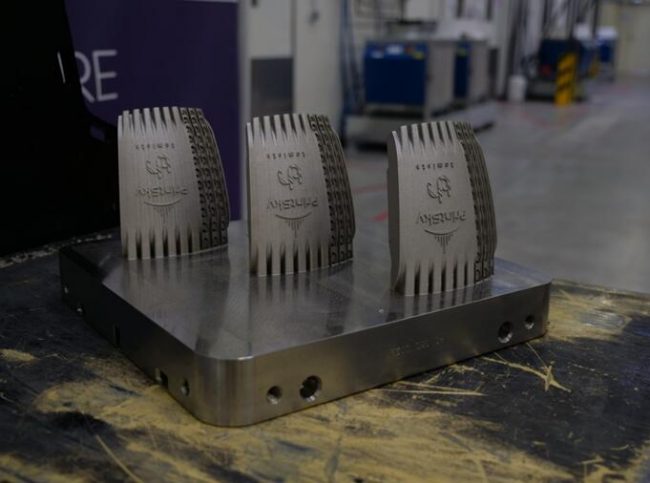Heat Exchanger With Additive Manufacturing
Le projet HEWAM vise à développer un échangeur de chaleur en utilisant tout le potentiel de la fabrication additive. Nous proposons une géométrie qui s’adapte à une large gamme de surfaces et de volumes utilisés dans l’industrie aérospatiale.
Le projet est développé par le consortium Temisth et AddUp – Sogeclair Aerospace (devenu Printsky*)
PrintSky* est une joint-venture entre AddUp, fabricant de machines de fabrication additive et Sogeclair Aerospace, bureau d’études en génie mécanique. La JV est dédiée à l’incubation de futurs projets de production industrielle dans le domaine de la fabrication additive métallique pour les industries de l’Aéronautique, du Spatial et de la Défense.
Les industries aérospatiales disposent d’un large éventail d’applications thermiques ainsi que de la climatisation, du système de refroidissement des freins, des plaques froides intégrées pour l’électronique, de la gestion thermique des moteurs, etc. À l’avenir, avec l’augmentation des systèmes électriques sur les avions, les systèmes thermiques pour moteur électrique ou récupération de chaleur sur l’APU auront besoin de plus en plus de solutions personnalisées afin d’assurer des performances avec des appareils légers.
Conditions de délimitation du projet HEWAM
Les objectifs sont de refroidir un liquide sous forme d’huile entrant dans l’échangeur de chaleur à 110°C avec de l’air ambiant à -50°C. Le débit massique d’huile est fixe. Le débit massique d’air est donné par la pression dynamique du flux d’air arrivant dans la zone du HX et les caractéristiques de perte de charge de l’appareil. L’objectif est d’éliminer 2200W de la circulation d’huile (32g/s ~2,4 L/min) sur un module du HX en assurant un débit d’air suffisant à travers le HX.
Le matériau choisi pour la conception est l’Inconel 718. Ce matériau est plus lourd que l’aluminium de plus de 3 fois et est moins conducteur, cependant pour la fabrication additive il présente des caractéristiques plus intéressantes. Avec l’Inconel, nous pouvons assurer une paroi mince (<0,5 mm) sans fuite et des ailettes fines (0,15 mm). La conception de l’échangeur de chaleur avec les bonnes architectures permet d’obtenir une masse et des performances similaires à celles des boîtiers de FA en aluminium.
La méthodologie développée par le consortium aboutit à une conception spécifique prenant en compte la variation de la température de l’air (de -50°C à +25°C) et donc sa densité. Nous avons ainsi augmenté la largeur du canal pour limiter l’accélération de l’air et donc la perte de charge. Afin de maintenir les performances thermiques, les ailerons ont une géométrie adaptative le long du flux d’air afin de tenir compte de la vitesse de l’air et des changements de taille des canaux.

Trois échangeurs de chaleur ont été imprimés sur un FormUp350.
Volume de production : 350x350x350 mm
Puissance laser : 2x500W
Epaisseur de couche programmable : 20 à 100 μm
Vitesse de balayage :10 m/s maximum
Plaque chauffante : 200°C
Les trois échantillons seront exposés au Salon du Bourget 2019 sur le stand respectif de chacun des membres du consortium (AddUp, Sogeclair et Temisth)
Conclusions
L’optimisation a été faite à plusieurs échelles : Optimisation locale des canaux à ailettes fines. Optimisation à méso-échelle avec une variation du motif des ailerons et de la taille du canal. Optimisation à l’échelle macro à l’aide de la forme incurvée pour une meilleure intégration du système. Globalement, l’épaisseur disponible sur cet échantillon permet d’obtenir une porosité apparente d’environ 90%.

